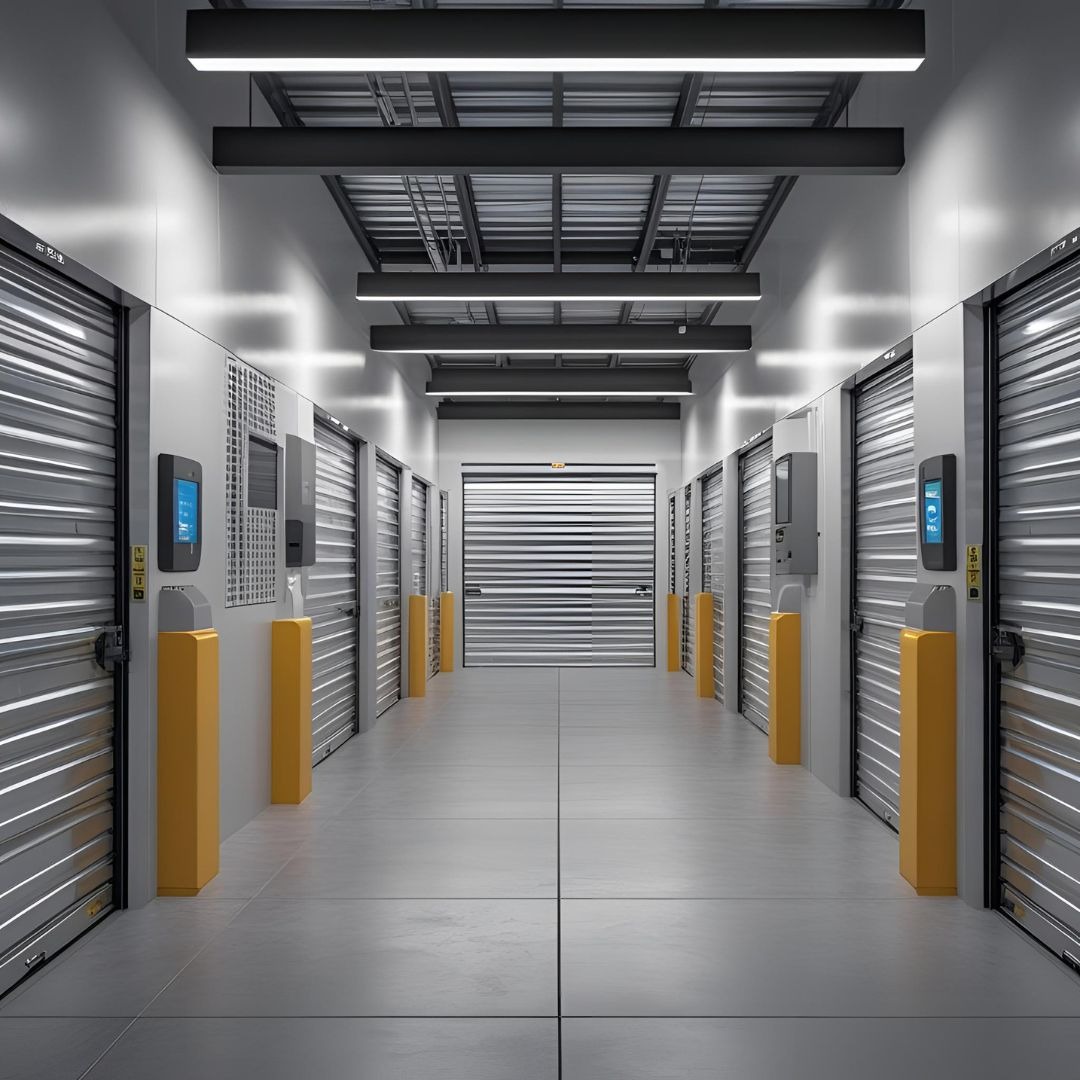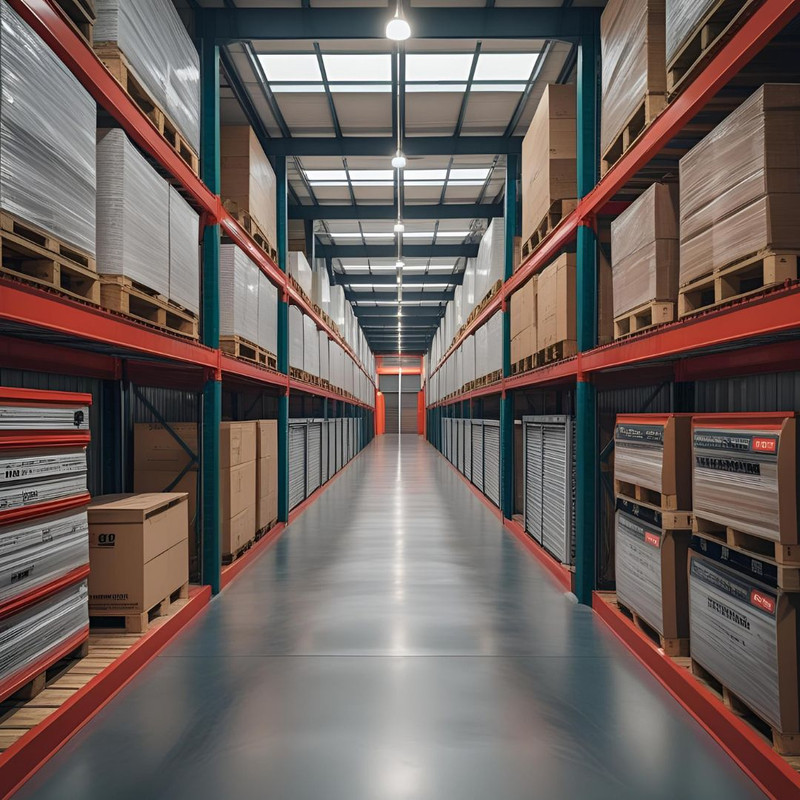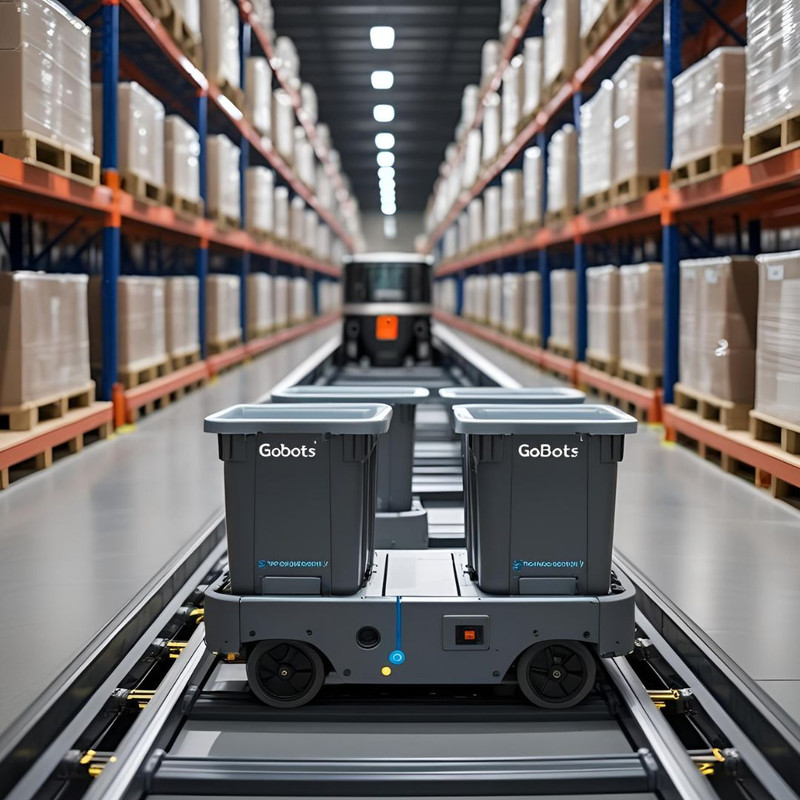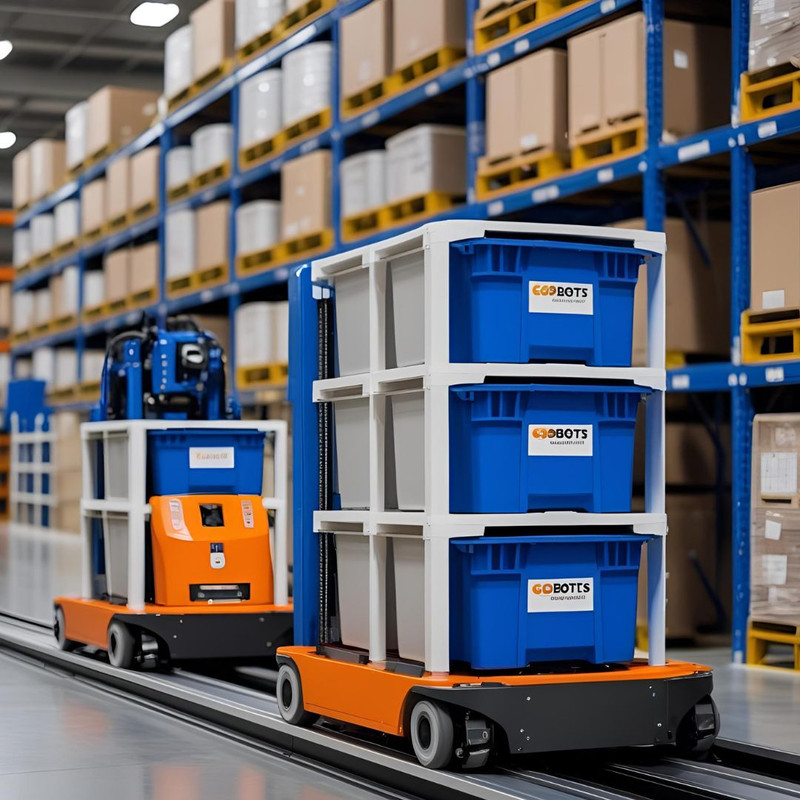Ultimate 2025 guide to self storage technology & automation
Self storage technology, including management software, smart systems, and kiosks, automates operations, boosts efficiency, and improves customer experience by handling tasks like rentals, payments, and security.

As a self storage facility owner, you want your operations to run smoothly so your customers are satisfied. But managing it all—the gates, the cameras, climate control , bookings etc.—can get overwhelming…
What if there was a way to reduce the burden of routine tasks on yourself and your staff by automating most processes? New self storage technology is doing just that for facilities like yours. In this article, we’ll look at the different types of self storage technology being adopted across the industry and how they can significantly boost your business’s efficiency.
Download the ultimate Self Storage e-book
Everything you need to know about setting up your self-storage facility.
What Is Self Storage Technology?
Self storage technology refers to software and systems designed specifically for self storage businesses. These technologies handle essential functions like renting units, billing self storage customers, and managing facilities. Self storage technology exist in many forms, from basic management software to high-tech smart storage systems and kiosks.
Management Software
As a self storage facility owner, you want your operations to run smoothly so your customers are satisfied. But managing it all—the gates, the cameras, climate control, bookings, etc.—can get overwhelming. And with 10.2% of U.S. households using self storage in 2024 (up from 9.3% in 2019), the need for efficient, automated facilities has never been greater.
Advances in self storage technology have enabled facility owners to offer better customer service and reduce operating costs in the face of growing demand and increasing customer needs. In this article, we’ll look at the different types of self storage technology being adopted across the industry and how they can significantly boost your business’s efficiency while also providing advice for selecting the right one.
Table of contents
Key takeaways
Self storage technology helps automate a facility’s manual tasks, resulting in improved operational efficiency and reduced costs.
Smart features like remote monitoring and door status alerts offer peace of mind and can potentially generate extra revenue by attracting more premium renters.
Self-service kiosks (which are preferred by 77% of consumers) enable 24/7 customer support and reduce staffing needs; a voice-powered kiosk can help you reach a broader audience.
Self storage technologies like AS/RS cranes, VBMs, and robotic shuttles optimize space, improve throughput, and reduce labor costs.
To implement self storage technology effectively, focus on a scalable and cost-effective solution that directly addresses your operational pain points and aligns with your vision.

What is self storage technology? (3 classes)
Self storage technology refers to software and systems designed specifically to enhance security, convenience, and operational efficiency for self storage businesses. These technologies handle essential functions like renting units, billing self storage customers, and securing facilities.
Self storage technology exists in many forms/classes, from basic management software to high-tech smart storage systems and kiosks. It touches every aspect of your operation—from marketing to access control—helping you deliver a seamless, modern experience to users.
Management software
The most common type of self storage tech is management software. Platforms like Storeganise help self storage owners manage day-to-day operations, allowing them to conveniently view auto-generated data reports.
You can use management software to list available units, sign rental agreements, bill tenants, and keep track of payments. Some platforms also offer dynamic rate management and seamless integrations with accounting, payment, and security systems, thereby minimizing human error and administrative workload.
Check out the video below from SEO (search engine optimization) expert, Henry Purchase, for a comparison of the best self storage software for 2025 to help you make an informed choice.
Best Self-Storage Software for 2025 (Automate Your Facility)
Smart systems
Some self storage businesses opt for smart storage systems with high-tech features like electronic gate access, security cameras, and unit sensors. These systems provide 24/7 unit access for tenants while also boosting security. They automatically monitor units for signs of damage (e.g., water damage) or unauthorised access and can even control functions like lighting, heating, and door locks remotely.
If you implement smart access control, it should cover not only the storage unit but also facility gates, elevators, and other access points. Systems with door status sensors and real-time alerts improve storage facility security, and these advanced features can even be monetized; customers are often willing to pay extra for premium, secure access.
Note: Always plan for contingencies, such as lost keys or system malfunctions. You can do this by choosing locks with backup mechanisms, like card access or override keys.
Self storage kiosks
With 77% of consumers preferring self-checkout due to faster service, self storage self-service kiosks are another popular technology that’s revolutionizing how tenants rent units, make payments, and access facilities. A self service kiosk provides a convenient service option for customers while freeing up employees to focus on other tasks. They’re ideal for self storage locations with limited space or staff.
Voice-controlled kiosks, for example are becoming more common, offering added accessibility and multilingual support. These innovations not only streamline processes but also enable access by broader user demographics.
Facilities automated by self storage technology enjoy streamlined operations, reduced costs, and improved customer experience. The increased efficiency and automation provided by these technologies may be just what you need to gain a competitive edge. In fact, most renters will appreciate facilities that make moving their stuff in and out of storage units a breeze. Keep reading as we delve deeper into some common self storage loading and off-loading automation systems that you can utilise on-site.
3 types of self storage loading and offloading automation systems
While many tasks go into managing a self storage facility, loading and offloading items are the most labour-intensive. Thankfully, self storage automation can help you cut labour costs and improve customer experience, leading to more efficient operations.
Here are some popular self storage automation systems that are essential for unmanned facilities:
- Crane-based mini-load AS/RS
- Vertical buffer modules (VBMs)
- Robotic shuttles
1. Crane-based mini-load AS/RS
This towering technology uses cranes to automatically store and retrieve containers from racks up to 100 feet high. The automated storage & retrieval system (AS/RS) lifts the containers and slides them into place, maximising vertical space. For high-volume self storage businesses, these systems can significantly boost throughput while reducing labour costs. The downside is that they require a major upfront investment and ample ceiling height and storage space.
2. Vertical buffer modules (VBMs)
VBMs are modular shelving units with built-in lifts that automatically raise and lower stacks of containers. Operators simply enter the container number into a control panel, and the system delivers the container in under a minute. VBMs don’t require as much space as crane-based systems, but can still achieve high throughput. They do require level floors and high weight-bearing capacity, though.
3. Robotic shuttles
Robotic shuttle systems—such as the GoBots employed by Storefriendly—use automated carts that travel on tracks to retrieve and store containers. The carts lift and move containers from one rack to another, sorting and sequencing them automatically. Robotic shuttles provide flexible, scalable automation at a lower cost than crane-based systems but typically have lower throughput. They can navigate tight spaces, however, and don’t require much ceiling height.
Self storage loading and offloading automation comes in many forms, from towering cranes to nimble robots. Implementing these technologies (alongside self storage software) offers several advantages for self storage operators, as we’ll observe below.

Benefits of an automated self storage system for operators
An automated self storage business is a great way for storage operators to increase their bottomline. For example, it eliminates the need to staff an expensive call centre dedicated to handling customer service and rentals. An automated system can handle many of these tasks, reducing costs and freeing up your time. The three major advantages of having automation self storage technology in place include:
- Increased revenue generation
- Lower operating costs
- Improved customer service
1. Increased revenue generation
With an automated sales flow, customers can quickly rent units and complete payments on their schedules. This convenience often leads to higher occupancy rates and more rentals, which translates into more revenue for you. Automated upselling and upgrade prompts can also encourage customers to rent larger, higher-value units or opt for other ancillary services you offer. Check out how Nyborg Møbelhotel quadrupled bookings and saved 30 hours per month with Storeganise in our recent case study.
2. Lower operating costs
One of the biggest benefits of self storage automation is eliminating the need for a call centre and its associated staffing costs. Automated phone menus, online account access, and kiosks give customers self-service options so they can handle tasks themselves. You’ll only need a small team to oversee the automation systems and provide on-site support.
3. Improved customer service
Automated self storage systems also improve customer experience. Customers today expect efficient, on-demand service, and automation delivers just that. With self storage software like Storeganise offering online rentals, bill payment, and access to account details 24/7, customers have a convenient, frictionless experience. Those who still want in-person service can get help from your staff during business hours.
By embracing automated technology in your self storage business, you’ll increase your operational efficiency, boost your bottom line, and improve your customers’ experience. While the upfront costs of new systems may seem daunting, the long-term rewards to your business can be substantial. To ensure you maximize the value of your investment, it’s important to take the time to select the right self storage technology for your facility, as we explain below.
How to choose the right automated self storage solution
The process of selecting a suitable self storage technology from the variety of options available can feel overwhelming. However, by assessing your key needs and priorities upfront, you can narrow down the choices to find a solution tailored to your business, just as The Space Program did in our recent case study.
Consider the following tips during your search to help you make an informed decision:
- Determine your must-haves
- Compare offerings
- Get guidance
- Start with the basics
1. Determine your must-haves
Think about what inefficiencies you want to solve or what areas you want to optimise. Maybe you need a solution to handle online rentals and payments. Or perhaps you’re looking to improve how you manage your storage units and track occupancy. Create a list of your must-have features to help you evaluate your options.
2. Compare offerings
Not all technology is created equal, so it’s important to do some research on leading self storage solutions to compare what they offer. Look at things like available features, accessibility, customer service, security, and scalability. See what packages and price points may suit your needs. While cost is a factor, don’t just go for the cheapest option; look for a solution that will provide the most value to your business in the long run.
Tip: Evaluate how future-proof each system is, including vendor lock-in risks and the ease of scaling or integrating new tech like sensors or AI.

3. Get guidance
Once you’ve explored some options, reach out to a few providers that interest you. Let them know what features and functionality are most important so they can determine how their technology may be a good fit. Ask them to walk you through how their software works and what type of support and guidance they provide. The right technology partner will take the time to understand your needs and offer recommendations tailored to your operations.
4. Start with the basics
It’s important not to feel overwhelmed by all the advanced features and options available. Focus first on solutions that handle the basics well, e.g., online rentals, payments, facility maps, storage unit management, and reporting. You can then opt for additional capabilities over time as needed to boost efficiency and optimise your business. The right self storage technology will help you do more with less, simplifying and streamlining processes so you can focus on growth.
Conclusion
Self storage technology can supercharge your business by automating mundane tasks like rent collection and inventory tracking, freeing up time for your team to focus on customer service. Providers like Storeganise are revolutionizing the way facility owners manage operations with self storage software. By offering renters the convenience of booking and paying online, among other benefits, Storeganise enhances customer experience while providing the convenience of seamless inventory and renters’ management.
Book a free Storeganise demo today to learn more!
Frequently Asked Questions
What are the disadvantages of self storage units?
Owning a facility in the self storage industry comes with challenges, such as:
- the time investment in finding quality staff,
- navigating tricky location choices,
- facing stiff competition with no guaranteed occupancy,
- managing inevitable tenant issues, and
- incurring costs for necessary security measures.
These cons require careful consideration when planning your self storage journey.
Is self storage still a good investment?
Self storage remains a great investment, known for generating passive income with low risk and notable performance stability during economic downturns. The profitability of self storage mainly hinges on the net rental income, which is the amount left after covering any mortgage costs, if present.
How does self storage investing work?
Self storage investing involves putting funds into storage facilities and earning returns through rental income from the units. This real estate investment caters to both individual customers and small to medium-sized businesses, offering a diversified client base and potential for stable income streams.